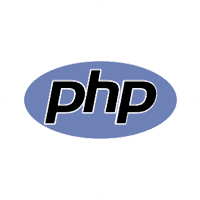Unlocking the Power of PHP: Building Dynamic Websites and Applications
Are you curious about web development and creating interactive websites? Look no further! In this comprehensive guide, we’ll delve into the world of PHP – a versatile scripting language that empowers developers to craft dynamic and feature-rich web experiences. Whether you’re a seasoned programmer or just starting your coding journey, PHP opens up a realm of possibilities. Join us as we explore the ins and outs of PHP and learn how it can take your web projects to new heights.

Introduction to PHP: Fueling the Web
PHP, which stands for Hypertext Preprocessor, is a server-side scripting language designed for web development. It’s an integral component in creating dynamic websites and web applications that respond to user interactions in real-time. With its intuitive syntax and seamless integration with HTML, PHP has become a cornerstone of modern web development.
Setting Up Your PHP Environment
Before you dive into coding, it’s essential to set up your PHP environment. You’ll need a web server (like Apache), a database server (such as MySQL), and PHP itself. Many developers opt for pre-packaged solutions like XAMPP or WAMP to streamline the installation process.
Variables and Data Types in PHP
In PHP, variables are used to store data, and they come in various types – integers, strings, floats, booleans, and more. Understanding data types is crucial for efficient programming and preventing unexpected bugs.
Control Structures: Making Decisions and Loops
Control structures, including if statements and loops, enable your PHP code to make decisions and perform repetitive tasks. They form the building blocks of logic that power your web applications.
Functions: Reusability at Its Best
Functions allow you to encapsulate blocks of code into reusable modules. They promote cleaner code, reduce redundancy, and enhance the maintainability of your projects.
Arrays and Strings: Managing Data Effectively
Arrays and strings are fundamental data structures in PHP. Arrays can store multiple values, while strings represent text. Mastering their manipulation is essential for effective data handling.
Working with Forms and User Input
Interacting with users is a core aspect of web development. PHP enables you to process form submissions and validate user input, making your applications interactive and user-friendly.
PHP and Databases: Connecting and Querying
Databases are at the heart of most web applications. PHP provides robust database connectivity through extensions like MySQLi and PDO, allowing you to store, retrieve, and manipulate data effortlessly.
Creating Dynamic Web Pages
Dynamic web pages adapt and change based on user input and other variables. With PHP, you can seamlessly integrate dynamic content into your web pages, offering a personalized experience to your users.
Error Handling and Debugging in PHP
Bugs are inevitable in programming. PHP offers various error handling mechanisms and debugging tools to help you identify and rectify issues, ensuring smooth performance.
Security Best Practices for PHP Applications
Security should never be an afterthought. Learn about PHP’s security features and best practices to safeguard your applications against common vulnerabilities and attacks.
Object-Oriented PHP: Building Modular Code
Object-oriented programming (OOP) promotes code modularity and reusability. Discover how to implement OOP concepts in PHP for more organized and maintainable codebases.
API Integration with PHP
Integrating with external services and APIs (Application Programming Interfaces) extends the functionality of your applications. PHP’s flexibility allows you to communicate with various services seamlessly.
Frameworks and CMS: Simplifying Development
Frameworks and Content Management Systems (CMS) like Laravel and WordPress streamline development, providing pre-built components and structures to accelerate your coding process.
Optimizing PHP Performance for Speed
Efficient code is key to fast-loading websites and applications. Learn optimization techniques to enhance your PHP code’s performance and deliver exceptional user experiences.
Conclusion
Congratulations, you’ve embarked on a journey through the dynamic world of PHP! By mastering its concepts and applying them to your projects, you’ll be able to craft interactive, feature-rich web applications that captivate users. Whether you’re building a personal blog or a robust e-commerce platform, PHP’s versatility and power have got you covered.
FAQs
- Is PHP suitable for beginners? Absolutely! PHP’s user-friendly syntax makes it a great choice for beginners venturing into web development.
- Can I use PHP to create mobile apps? While PHP is primarily for web development, you can integrate it with frameworks like React Native to build mobile apps.
- Are there security risks associated with PHP? Like any programming language, security risks exist. Following best practices and staying updated on security patches mitigates these risks.
- What’s the difference between PHP and JavaScript? PHP is a server-side language, while JavaScript is primarily used on the client side for web interactivity.
- Where can I learn more about advanced PHP topics? There are numerous online resources, tutorials, and courses dedicated to advancing your PHP skills.

